The J. Arthur Dixon printing company started up in Newport on the Isle of Wight in the 1930s and continued until it was eventually absorbed into the John Hinde group of companies in 1998. Postcards were always a major part of their activities but they also produced Christmas Cards, Travel Guides and assorted other publications.
In 1956 a second factory was opened in Inverness and production there continued until the late 1970s when the factory closed.
Postcards were produced in sepia tint, hand-tinted, black & white and eventually in full colour. During the 1950’s and 1960’s in particular, it was possible to find Dixon’s matt-finish colour postcards the length and breadth of the country and also abroad. Cards from Cyprus, Falkland Islands, Gibraltar, Jamaica & Singapore have all been advertised on Ebay in recent months although I have not seen actual examples of all of them.
This catalogue is still in it's infancy, with just a few test pages uploaded. In time it will include illustrations of all back designs (with code references) and the card lists will quote those codes so that the many versions of each card can be satisfactorily identified. As there seems nowhere to obtain information other than from my own collection the only cards listed are those that I have actually seen myself. Any contributions to johncrabbe at yahoo.com would be welcomed.

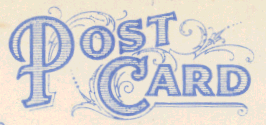

Within this catalogue the layout of the back of these cards is identified in the main by the style of logo that appears at the centre-top of the card. Appended to this is a coded note referring to any variations that may appear elsewhere on the card while the logo stays constant.
Broadly speaking, these main categories are as follows (shown at approximately twice actual size, unless whole cards when half size) and in due course each type will link to a table of variations :-
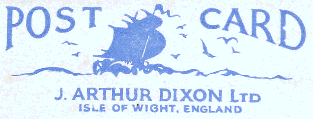





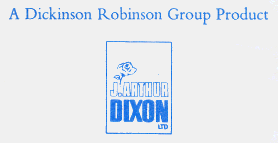


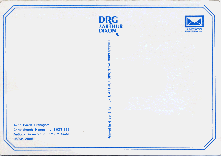





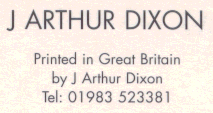


Almost all Dixon cards bear an identifying reference, usually in the lower left-hand corner of the back. A few are blank, some very old cards have the number elsewhere.
This reference comprises up to three parts - an optional prefix (alpha or alphanumeric) - a number - an optional suffix (alpha or alphanumeric)
The Prefix - when present this either describes the size of the card (eg: L6 or L1), clearly identifies the location of the subject, or takes the form of a three character abbreviation indicating the County in which the card subject is located or, less often, a special series code. See the list of known codes below.
The Number - in the range 1 to 99,999. Generally speaking, apart from the early years of coloured cards, these numbers are unique. Unfortunately this is not always the case and the same number might have been used for different cards printed in Scotland & the Isle of Wight - or possibly just carelessly duplicated at one factory. This catalogue uses these numbers for it's primary sequencing and the prefix/suffix for secondary sorting.
The Suffix - can be a simple as "G" indicating glossy finish on the picture side, a location name (or abbreviated name) or a sequence within a particular series.
The cards can be divided into 4 main historic groups and these are reflected in the catalogue layout :-
Generally speaking coloured cards can be found in the following sizes :-
Number sequences in sizes 1, 2 & 3 above are generally mutually exclusive, hence they are catalogued together with a size code of 1, 2 or 3 to distinguish re-issues in differing sizes.
Several instances can be found to indicate that the prefix was the least important part of the identity - eg two identical pictures of Abingdon, numbered the same but with prefix POX or PBK as the county boundaries were amended in 1974 and the town was reassigned from Oxfordshire to Buckinghamshire.
To allow download times to be kept to a reasonable length the catalogue is divided into sections. For now the following pages are present :-
Glossy black & white cards (1 so far)
(the abbreviation CPJADS is used to save download time and means "Colour Photograph by the J Arthur Dixon Studios")
Cards without reference numbers (26 so far - alphabetic place order)
Cards in the range 1-999 (691 so far)
Cards in the range 1000-1999 (305 so far)
Cards in the range 2000-2999 (342 so far)
Cards in the range 3000-3999 (486 so far)
Cards in the range 4000-4999 (293 so far)
Cards in the range 5000-5999 (169 so far)
Cards in the range 6000-6999 (289 so far)
Cards in the range 7000-7999 (153 so far)
Cards in the range 8000-8999 (42 so far)
Cards in the range 9000-9999 (16 so far)
Cards in the range 10000-10999 (32 so far)
Cards in the range 11000-11999 (21 so far)
Cards in the range 12000-12999 (2 so far)
Cards in the range 21000-21999 (243 so far)
Cards in the range 23000-23999 (373 so far)
Cards in the range 30000-30999 (13 so far)
Cards in the range 40000-40999 (8 so far)
Cards in the range 41000-41999 (20 so far)
Cards in the range 42000-42999 (3 so far)
Cards in the range 43000-43999 (5 so far)
Cards in the range 80000-80999 (81 so far)
Cards in the range 81000-81999 (87 so far)
Cards in the range 82000-82999 (66 so far)
Cards in the range 83000-83999 (72 so far)
This page last amended 20th March 2008
© copyright 2008 John Crabbe